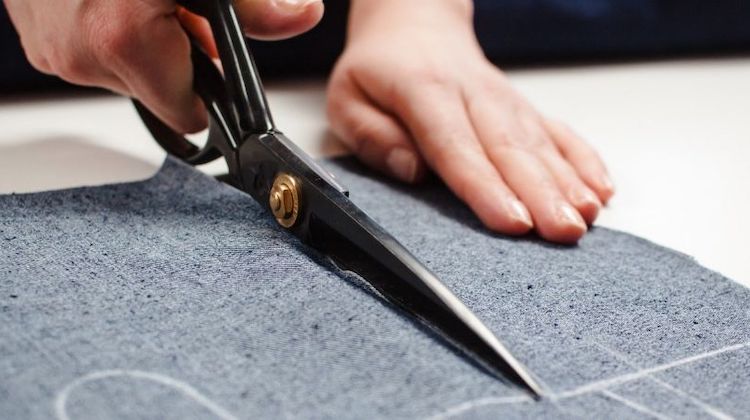With the coronavirus pandemic wreaking havoc on the U.S. economy, small businesses like ours are suffering. But that’s no excuse to cut corners and lower quality.
Auto trim shops can save money and still produce high-quality work by simply controlling costs, says Jim Norland.
He wrote an article for the May 2008 issue of Auto Trim & Restyling News (ATRN) that provides loads of tips and advice on how to do it.
Since the magazine is discontinued, we republished the article in full below.
Don’t Cut Corners, But Control Costs
By Jim Norland, ATRN
The Dow Jones industrial average plummeted for a while, then went up by 400+ points on a day in mid-March right after a rate cut by the Fed. Other economic indicators are confusing and uncertain. The economic roller coaster makes us all a little jumpy and worried.
 If your workload is less than usual, or your costs for materials, supplies and labor are going up, the time is right to control or manage your operations more closely. With a few prudent measures, you have a better chance to ride out economic dips.
If your workload is less than usual, or your costs for materials, supplies and labor are going up, the time is right to control or manage your operations more closely. With a few prudent measures, you have a better chance to ride out economic dips.
Beware of the temptation to cut corners or sacrifice quality in your work, however. It’s a deadly trap. You may know that a competitor across town is under cutting your prices, and you may guess how he or she is doing it, buying cheaper fabric, taking less time to reinforce seams and corners, failing to smooth edges, skimping on fitting and adjusting. Maybe some workers are being asked to work overtime without the appropriate pay.
Your competitor may be gambling that the job leaving the shop will look “good enough” initially. Its shortcomings may not be noticed for a few months. But when they do show up, in a tear, rip or scratch that shouldn’t happen with quality work, the consumer can often remember or learn who did that work, and swear never to do business there again.
Stick to your quality standards, but check to see where you might shave your costs. Your work shouldn’t cheapen although it could cost you less to produce it.
Get a better price on fabric or material by buying in quantity, maybe in cooperation with a nearby but not competing Shop that is getting jobs similar to yours or working a similar market. The same goes for supplies such as thread, adhesive, cutting tools or blades, often offered by your fabric source. The more you order at one time the better deal you can get.
More precise patterning and cutting can trim costs without trimming quality. Fabric waste and careless use of those supplies and tools are concerns for all of us.
Can you save on utilities? Consumers are buying lightbulbs that are more efficient, turning off unused lights and appliances, adjusting thermostats and insulating to get better heating and cooling. Any business owner can apply the same techniques.
Some of these same measures will work in your shop without cutting quality or making anyone uncomfortable or unsafe. For example, use more task lighting to brightly illuminate a working area while lessening the overall or ambient lighting; let natural sunlight help you when possible. Turn off a machine, a light or a water faucet when it isn’t serving an immediate need.
Labor costs are always a major factor. One operator in a different industry told me recently that combined raises in the minimum wage in his market have risen by 40% in about 18 months. Ouch! Corresponding costs such as worker’s compensation premiums and other insurance go up at the same time. He kept his costs under control through tighter scheduling and better supervision of part-time workers. You may not be using part-timers for cutting, sewing and installation, but they can be used and carefully scheduled for work that doesn’t require professional skills. Shagging cars, washing vehicles after a job is completed, or picking up parts and supplies can be done by part-time help.
Some students or others used for these tasks may become potential trainees in the more skilled facets of your business. If they see what can be accomplished by real pros in restoration, reconditioning or dressing up a vehicle, they can learn and you have a chance to size them up as potential full-time employees.
Size up opportunities for repetitive jobs done at a time and place suitable for both you and your customers. The repeat nature of these jobs saves you time and other costs, and can keep overall business at an even keel. Some examples:
Restaurant booths and other seating may be done a piece or two at a time on-site after hours. Flexible scheduling can keep you or one of your trimmers busy. Boat and truck seats are often so standardized, at least within a fleet of trucks or popular boat models at a marina, that you can develop a pattern and build some spares in your shop.
Resorts and hotel furniture and fixtures need repair or renewal during the client’s off-season, which may be just when your vehicle or custom boat business is slow. Medical office chairs may all be the same model, and you can shuttle a few at a time in and out of your shop without disrupting the client’s business.
Make such jobs work for you, enabling you to keep your best employees working full-time throughout the year. Some of these may require just an hour or two of shop time before or after a major vehicle trim job.
Thinking carefully about some of these opportunities will help us all work smarter and more profitably. At the least they enable us to ride out some economic waves, and at best they can make business more rewarding in good times, too.
Jim Norland was a regular contributor to Auto Trim & Restyling News.

Recent Comments